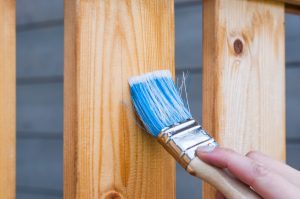A beginners guide to fixing and flipping properties
In 2016, 6.1% of US home sales involved house flippers. Fixing and flipping properties is when you buy a house betting on short-term price appreciation. Maybe you fixed the house up a bit, dashed some new paint on there, maybe fixed up the yard for some curb appeal and stuck a “For Sale” sign right back in the yard where it had been just a few short months prior.
The practice of flipping houses was pretty common around 2006, prior the economic recession. But it’s catching back on. Cities that were hit hard by foreclosures are now seeing a major comeback of house flipping. Cities like Las Vegas, Tampa, Fresno, Memphis, and Atlanta are experiencing record-breaking highs. House flippers can even provide a valued service to their communities by making improvements to local homes that buyers just don’t have time for.
The real estate market in Las Vegas continues to be as varied as the contrast between the strip and the desert. It is a market known for both its world-class penthouses and extreme extravagance as well as abandoned foreclosures. This makes it an interesting market to flip homes in, and one which has been said to see changes develop as fast as a round of Texas Hold’em. Although, for the moment, fixing and flipping houses in the Las Vegas real estate market is just the same as anywhere else in the world when it comes down to operations.
Those that have been tuning in to episodes of the reality TV show Flipping Vegas will have witnessed some of the following blunders and challenges in action. These factors remain true, no matter where you are flipping houses. We hope our guide sharing our tips and tricks will help you to sell a fix and flip house in Lad Vegas fast!
How cheap do you have to buy houses for flipping to make a profit?
House flipping starts with how much money you pay for the house you plan to flip. Most people underestimate the costs involved in flipping and that is why they lose money or do not make much money on their first flip. The 70% rule is a great guideline to help flippers calculate if they can make a profit on a flip.
The 70% rule states a house must be bought for 70% of the ARV minus the cost of repairs. ARV stands for After Repaired Value and is what the home will sell for after it is fixed up. Here is an example to demonstrate:
- ARV: 150,000 USD
- Repairs: 25,000 USD
Purchase price for the flip: 80,000 USD
Here’s how we worked out the purchase price: (150,000 USD x 70% – 25,000 USD = 80,000 USD)
Many people make the mistake of paying too much money for a house they want to flip because they only consider the repair cost and what they can sell it for. You need to have a lot of room between the purchase price and selling price on flips because there are so many costs involved.
When flipping houses what are the costs involved?
The most obvious cost when flipping houses is the repair cost. Besides the repair cost, you will have carrying costs, buying costs and selling costs.
- Buying costs: When you buy a house to flip you will have to pay closing costs, which can be as much as 3-6% of the purchase price if you get a loan. Hard money lenders will charge up to 4% for origination charges; other lenders will charge less but still expect to pay at least 1%. You will have to pay closing fees to the title company, recording fees and possibly an appraisal and inspection.
- Carrying costs: Once you own the property you will have to pay for insurance, taxes, HOA fees, yard maintenance, utilities and interest if you get a loan. Interest rates will range from 5-20% depending on the lender you use.
- Selling costs: To sell a house you will have to pay real estate agents, closings fees, title insurance and possibly closing costs for the buyer.
Here is what the total costs might look like on a property bought for flipping at 80,000 USD. Then sold for 150,000 USD which also took 6 months to sell:
- Inspection: 350 USD
- Appraisal: 550 USD
- Loan costs: 3,000 USD
- Closing fees: 500 USD
- Yard maintenance: 350 USD
- Insurance: 400 USD
- Taxes: 500 USD
- Utilities: 1,000 USD
- Interest: 3,000 USD
- Title insurance: 1,000 USD
- Real estate agents: 9,000 USD
- Closing fees: 500 USD
- Total cost: 20,150 USD
The total costs for this flip are 20,150 USD without any fixing or repairs being done. These costs are rough estimates for a flip in Nevada and assume you use a real estate agent. New flippers can expect to pay higher costs for financing and costs also vary widely by the state due to tax rates if an attorney is needed and many more other factors.
How much does it cost to repair a fix and flip property?
Before you buy a fix and flip, you have to determine what the cost will be to fix and repair the home. The repair cost will fluctuate greatly based on the amount of work needed, the contractor used and the area you live in. We recommend using contractors to repair all your houses because most of the time it is not worth it to do it yourself. Finding contractors is tough and one of the hardest parts of a flipping business. It’s a good idea once started to constantly change contractors and look for new people who will charge a fair amount and work quickly.
When you sell a flip, you want to make sure it is in great shape and the buyers can get a loan. All the major systems should work, the home should be updated and look amazing. You should aim to spend at least 15,000 USD on all your flips and as much as 50,000 USD depending on what work that is needed.
How much profit is there in flipping houses?
To help illustrate this, we’ll start with a hypothetical flip. Let’s assume the repair costs are 15,000 USD, which would bring the total costs to 35,000 USD. If you buy the house for 80,000 USD and have 35,000 USD on costs, that leaves you at a break-even point of 115,000 USD. Selling the house for 150,000 USD would net a profit of 35,000 USD on the flip if everything goes perfectly.
Rarely does everything go perfectly on a flip, because repair costs come in higher, unexpected costs come up and you don’t always sell a house for as much as you plan too. With this in mind, it’s a good idea to always add 5,000 USD into the cost estimates for unexpected repairs or costs that will most likely come up. Even though the initial estimates show a 35,000 USD profit, in reality, the profit would most likely come in at around 30,000 USD or even 25,000 USD.
If you are using hard money to finance a fix and flip, your costs will be even higher. That’s because the interest and origination fees are higher than the financing. Keep in mind it is rare to find a great deal, and if it’s too good to be true, it probably isn’t. If you happen to be a real estate agent, your costs may be less than what we’ve estimated in this hypothetical flip. Don’t forget to save a commission when buying houses and when you sell them as well.
How can you buy houses cheap enough to flip?
Now that you can see and understand why you have to buy flips so cheap to make a profit, the question is how can you possibly find houses priced so low? In Las Vegas, the market is extremely hot with rising prices and low inventory, but you will still be able to buy 90% of your flips from the MLS. If you are a real estate agent, already know one or already have one, that is a huge advantage in this situation because you’ll be able to write offers very quickly, save money on commissions and pay more for flips than other investors.
Assuming you are a real estate agent and saved a commission on the front and back-end of the flip, let’s say 10,000 USD. That would be your benefit in costs for some cases that a non-agent would typically have to pay. That savings could allow you to pay more for a fix and flip than an investor who is not an agent could pay and still make a healthy profit out of it. If you combine being able to pay more for flips and the fact that you can make offers in an hour after a home is listed, being or befriending an agent gets many more deals. Here are some more tips to get a great deal on houses to flip:
- Find a great real estate agent who will find you deals fast and act fast
- Be pre-qualified with a lender and ready to make an offer immediately
- Waive your inspection contingency (only for experienced flippers, but keep this in mind for when you’re ready)
- Offer cash with a high earnest money deposit
- Be willing to close in 15 days or less
- Check auction sites like auction.com for homes that are not listed in MLS
- Look for “for sale” by owner homes that may be underpriced
- Start a direct marketing campaign or find a wholesaler in your area
Some of these techniques will work better if the cash is available. That does not mean it is impossible to get a deal that you can flip, but you may have to be more patient. It is usual to go months without seeing a great deal that has enough room to flip. So, the key here is to be patient but to be ready when the right deal becomes available.
How can you finance fix and flips?
If you use a local portfolio lender to finance flips; they charge a one percent origination fee and 5.25% interest rate on a one year loan for flipping. The catch is they only finance 75% of the purchase price. With this scenario, you will have to come up with 25% for down payment, money for repairs and all the carrying costs. It’s also important to note that with this approach you can easily have over 50,000 USD in cash tied up in one flip. There are many ways to put less cash into a flip, but it will cost you higher interest rates and fees in most cases.
Hard money lenders will loan more money for flips, but they charge higher rates. Interest can range from 8-18% and they usually charge from 2- 5 origination points. The advantage is hard money lenders will loan much higher loan amounts; up to 100% of the purchase price and in some cases the repairs as well. To get the entire purchase price financed with hard money, it really helps if you are an experienced investor.
Private money is a loan from a private investor. It could be a loan from a friend, family member, business partner or stranger. Private money rates vary depending on the situation. If one of your relatives has the money available, reach out to them and pay them a 6% rate so it is worth their time. Some private money lenders will charge less and some much more.
Partnerships are another way to get started flipping with little money. Many flippers get started by doing most the work; finding, repairing and selling a flip, but they have to partner finance everything. A typical deal is the partners split profits 50/50 for one person doing all the work and another providing all the money.
Crowdfunding has also made its way into the flipping world. The costs are similar to hard money and most crowdfunding platforms are looking for experienced investors.
How long does it take to flip a house?
Earlier we provided an example of a house that took 6 months to flip. This may seem like a very long time to most beginners, but in truth – it takes time to flip. Many investors get into trouble because they think they will complete the flip in 3 months and base all their costs on 3 months. Don’t make the same mistake! It takes time to get a contractor scheduled, get the work done, market a house and sell a house.
When you buy a flip, most contractors are not able to start right away. The contractor will have other jobs and it may be a couple of weeks before they can start working. The time it takes to complete the work is almost always longer than the contractor says. If they say it will take 2 weeks, count on the work taking a month. Unless you are having only the basics repaired like paint and carpet. It’s possible for the work to repair a house to take at least a month and bigger jobs to take 2 months.
After the work is done, you have to get the house cleaned and listed for sale. It takes a week or so to get everything ready and the home on the market and then you have to wait for an offer to come in. If you price a home correctly you could expect to see an offer as early as 3 weeks after you listed the home. If you overprice a home it could take 6 weeks or longer to get an offer.
To get the highest price for your flip, you will want to sell to an owner occupant. In order to sell to an owner occupant, there is a 95% chance they will get a loan and that process takes from 4-6 weeks. Hopefully, the appraisal comes in at value and there are no issues that cause the contract to fall apart, because you will have to start the process all over again if that happens!
Here’s a quick summary of the time it takes to flip a house:
- To schedule a contractor and complete repairs: 1-3 months
- To list a home and get a contract: 1-2 months
- The time it takes for the buyer to close: 1-2 months
- Total time: 3-7 months
This time frame assumes the contractor is fairly quick working, the house is priced right, the buyers get their loan with no problems and there are no other delays. When flipping houses, you have to remember that nothing ever works out perfectly so plan for delays and plan for a 6 month turn time.
What is the best way to sell a flip?
Many flippers try to sell a house for sale by owner to save money on a real estate agent commission. This is a huge mistake if the house flipper does not know what they are doing. The best way to sell a house is to use a real estate agent, because they will market it better, price it better and get it sold quicker. If you underprice a home, you will leave money on the table and if you overprice the home, it will sit on the market and sell for less than if it was priced right. It’s best to get a second opinion especially if it’s your first rodeo.
What are the risks of flipping houses?
There a lot of risks when you flip houses, but if you do your homework and plan well you should make money. The biggest risk is underestimating the costs of a flip and losing money or even the house because you are too headstrong to sell for a loss. No matter how nice a house is, you cannot sell it for more than market value. If you have had a house for sale with a real estate agent for months and don’t know why it is not selling, it’s most likely that the property is overpriced! It is better to sell a home now and make less money than to hope that prices will increase or a special buyer will come along.
Flippers fear a market change more than anything because it takes time to flip and a lower market means less profit. If you follow the rule of thumb we provided earlier: the 70% rule, you should be able to make money flipping even in a down market. Many flippers went bankrupt during the last housing crisis because they bought mediocre deals assuming they would make money because the market would always go up. When the market went down, they did not lower prices and take their losses fast enough. You could probably guess what happened, they could not sell the houses.
How to start flipping houses?
House flipping is a lot of work but is a lot of fun as well. You can make a great living flipping houses and once you’ve figured it out, it is not even a full-time job. The income from flipping is a great way to buy more houses to fix and flip. If you want to start flipping houses, it is not something you can spend a couple of hours on a week and make 50,000 USD on in 2 months. It takes time, hard work and experience to become a successful flipper.


